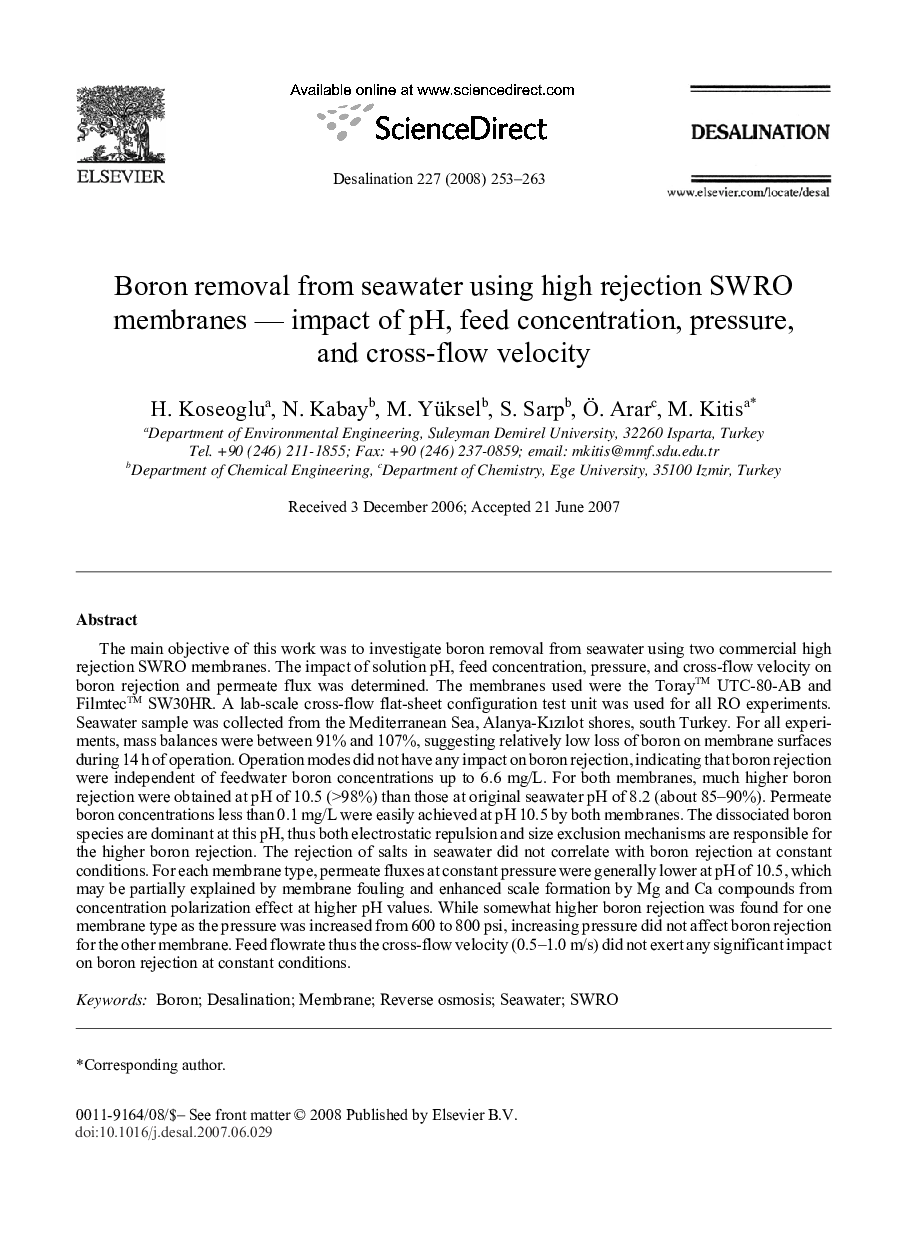| کد مقاله | کد نشریه | سال انتشار | مقاله انگلیسی | نسخه تمام متن |
|---|---|---|---|---|
| 627464 | 1455463 | 2008 | 11 صفحه PDF | دانلود رایگان |

The main objective of this work was to investigate boron removal from seawater using two commercial high rejection SWRO membranes. The impact of solution pH, feed concentration, pressure, and cross-flow velocity on boron rejection and permeate flux was determined. The membranes used were the Toray™ UTC-80-AB and Filmtec™ SW30HR. A lab-scale cross-flow flat-sheet configuration test unit was used for all RO experiments. Seawater sample was collected from the Mediterranean Sea, Alanya-Kızılot shores, south Turkey. For all experiments, mass balances were between 91% and 107%, suggesting relatively low loss of boron on membrane surfaces during 14 h of operation. Operation modes did not have any impact on boron rejection, indicating that boron rejection were independent of feedwater boron concentrations up to 6.6 mg/L. For both membranes, much higher boron rejection were obtained at pH of 10.5 (>98%) than those at original seawater pH of 8.2 (about 85–90%). Permeate boron concentrations less than 0.1 mg/L were easily achieved at pH 10.5 by both membranes. The dissociated boron species are dominant at this pH, thus both electrostatic repulsion and size exclusion mechanisms are responsible for the higher boron rejection. The rejection of salts in seawater did not correlate with boron rejection at constant conditions. For each membrane type, permeate fluxes at constant pressure were generally lower at pH of 10.5, which may be partially explained by membrane fouling and enhanced scale formation by Mg and Ca compounds from concentration polarization effect at higher pH values. While somewhat higher boron rejection was found for one membrane type as the pressure was increased from 600 to 800 psi, increasing pressure did not affect boron rejection for the other membrane. Feed flowrate thus the cross-flow velocity (0.5–1.0 m/s) did not exert any significant impact on boron rejection at constant conditions.
Journal: Desalination - Volume 227, Issues 1–3, 30 July 2008, Pages 253-263